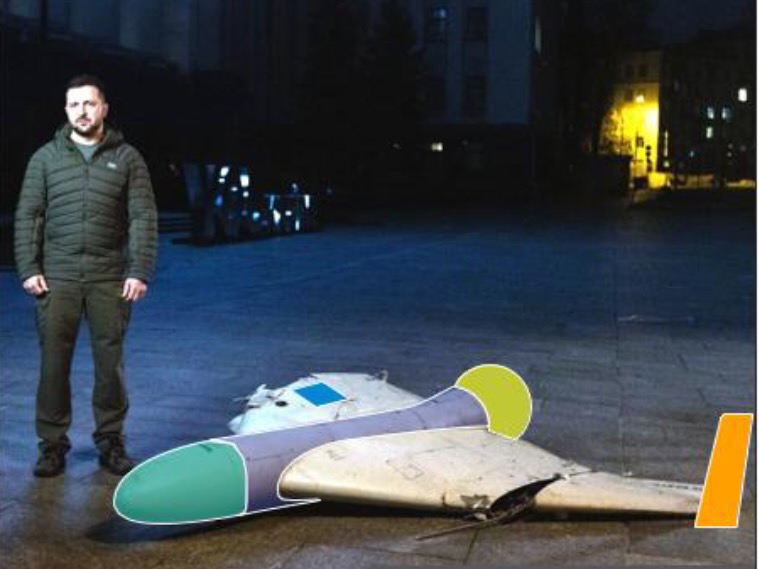
Referring to the letter by the Permanent Representative of the United States of America dated 11 September 2023 (S/2023/661) and its attachment, containing yet another unsubstantiated allegation about “violations” of paragraph 4 of annex B to Security Council resolution 2231 (2015), I would like to reiterate the principled position of the Russian Federation in this regard.
As those claims about so-called “Iranian drones in Ukraine” have been propagated by the United States, the United Kingdom, France and Germany for quite a while, I would like to highlight that the Russian Federation has already demonstrated their irrelevance on numerous occasions, most recently in my letters dated 23 May 2023 (S/2023/373), 14 June 2023 (S/2023/440) and 25 August 2023 (S/2023/628). The above-mentioned letter by the United States follows the pattern of the groundless allegations spread previously in the Security Council. The accusations against the Islamic Republic of Iran are not underpinned by any material evidence of violations of the procedures established by resolution 2231 (2015) and annex B thereto.
Given the lack of any credible arguments, the manipulative nature of the material attached to the letter, prepared by the United States Defense Intelligence Agency, is evident, as it consists of incoherent elements and artificial assumptions. The photos of some machinery and debris do not have any obvious indication of the connection with the Islamic Republic of Iran. Neither it is possible to verify the genuine character of so-called “evidence” brought by the United States, nor to prove that it was collected in Ukraine.
Among those incoherent “proofs” are irrelevant photos of United States officials expressing their views on the issue of alleged transfers of unmanned aerial vehicles, as well as pictures of hardly identifiable objects accompanied by comments on how one should interpret them (for instance, about the “examination” of Iranian unmanned aerial vehicles by a Russian delegation). The references to some “recently declassified information” and “credible independent organizations” and the use of affirmative constructions, such as “analysis confirms”, “clearly prove”, etc. are well-known methods which are extensively used by United States officials in order to manipulate public opinion or advance “highly likely”-styled accusations. As is often the case, the results of the “visual comparison” carried out by the United States Defense Intelligence Agency are accompanied by caveats, such as “nearly identical”, “similar” and, even more than that, “the Houthis have not used this system in an attack to date but have displayed it publicly”, etc. This language represents an evident attempt by the authors to shift the responsibility for the lack of credible evidence and to base their accusations on exploiting some anti-Iranian and anti-Russian sentiments instead of concrete facts.
Apart from not withstanding any scrutiny, the fake nature of some pieces of “evidence” put forward by the United States is not even disguised. To name a few, one of the photos represents the President of Ukraine standing next to debris of an unmanned aerial vehicle and having practically the same height, while the length of a drone of allegedly Iranian origin is supposed to be around 2.6 m. Moreover, an inscription in Russian on one of the alleged unmanned aerial vehicles is quite evidently written by a hand of a non-Russian speaker. In addition, we also observe attempts to violate the cause-and-effect relation by trying to portray the words of Reza Talaei-Nik, Deputy Minister of Defence of the Islamic Republic of Iran, as “public admission” of alleged transfers of unmanned aerial vehicles to the Russian Federation.
In the context of yet another attempt by the United States to give instructions to the Secretariat of the United Nations and to groundlessly claim that it “has a responsibility to carry out its mandate to examine evidence of Iran’s transfer of unmanned aerial vehicles to Russia in violation of Security Council resolution 2231 (2015), annex B, paragraph 4”, I would like to recall that the Russian Federation has drawn attention numerous times to the tasks of the Secretariat with regard to resolution 2231 (2015) that are exhaustively enumerated in the note by the President of the Security Council entitled “Security Council tasks under Security Council resolution 2231 (2015)” dated 16 January 2016 (S/2016/44). We reject the attempts of the United States to portray their assumptions as indisputable facts, thus to violate not only the mandate of the Secretariat, but also the Charter of the United Nations, in particular Article 100.
As such attempts persist, we urge once again the Secretariat of the United Nations to adopt a responsible and vigilant approach, not yielding to the pressure of those trying to legitimize unsubstantiated and politically motivated assertions, and to strictly abide by its mandate with regard to resolution 2231 (2015) as well as the Charter of the United Nations. We would like to reiterate that the Russian Federation would regard any non-mandated activity by the Secretariat as deliberate provocations aimed at undermining implementation of resolution 2231 (2015) and the multilateral process of restoration of the Joint Comprehensive Plan of Action.
I would be grateful for the circulation of the present letter as a document of the Security Council.

 Articles by this author
Articles by this author



























Stay In Touch
Follow us on social networks
Subscribe to weekly newsletter